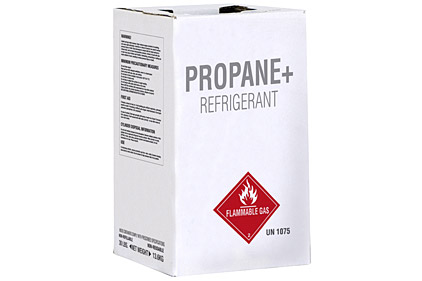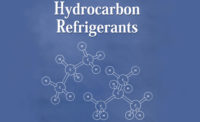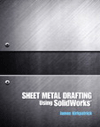
|
| A3 pure refrigerants that are a single molecule are R-290 (propane), R-600 (butane), R-600a (isobutane), and R-601A (isopentane). All are hydrocarbons. |
For many years now, technicians have been using a variety of flammable refrigerants in their pure state, or as a component of a blend. Using a small amount of a hydrocarbon (HC) refrigerant blended with other refrigerants to improve oil return has been a common practice in the air conditioning and refrigeration (ACR) industry for many years. ICOR brought this practice into the mainstream by adding an HC component to its proprietary direct replacement refrigerants, thus helping refrigerant users and equipment owners avoid a system oil change. The added HC allows HCFC and HFC refrigerant blends to be compatible with all standard refrigeration oils.
Since the CFC/HCFC phaseout began, technicians have been exposed to a great deal of new refrigerant terminology including the term "drop-in," which is a surrogate word used for an alternative refrigerant or direct replacement. The term “drop-in” is often misinterpreted to mean that it is OK to drop one type of refrigerant directly into a system containing a totally different refrigerant. The terms “drop-in,” “direct replacement,” and “alternative refrigerant,” describe refrigerants that can be used in systems originally designed for use with a different refrigerant, and could be done so with limited system modifications. (ICOR’s direct replacement for CFC-12, HOT SHOT® [R-414B] is an example. Hot Shot has proven to work very well in systems originally designed for use with R-12, but it was never meant to be mixed with R-12.)
Know What You Have
There is no reason for concern if you have used, or are preparing to use, a drop-in refrigerant in a system that is not designed for use with flammable refrigerants, providing the drop-in refrigerant is ASHRAE classified A1 (no flame propagation). All of the blends listed below that contain a flammable component do not pose a flammability risk.
ASHRAE Standard 34 Flammability Classifications are A1 (no flame propagation), A2/2L (lower flammability), and A3 (higher flammability). A1 refrigerants that contain a flammable component are R-401A/B, R-402A/B, R-404A, R-407A-F, R-408A, R-409A, R-410A, R-414A/B, R-416A, R-422A-D, R-427A, R-438A, R-500, R-502, and R-507. A1 pure refrigerants that are a single molecule are R-12, R-22, R-124, R-125, and R-134a.
A2/2L pure refrigerants that are a single molecule are R-32, R-142b, R-143a, and R-152a.
A3 pure refrigerants that are a single molecule are R-290 (propane), R-600 (butane), R-600a (isobutane), and R-601A (isopentane). All are hydrocarbons.
A major concern in our industry today is the careless promotion of hydrocarbons, or hydrocarbon-based blends, as drop-in refrigerants. Even though HC’s do have many positive attributes, in their pure state they are classified A3, and therefore if misapplied can be very dangerous to use. Safety should always be a top consideration when determining what refrigerant to use in any system or application. Compressor and equipment manufacturers design units specifically for flammable refrigerants. They are very different than systems designed for use with common CFC, HCFC, or HFC refrigerants. The risk of explosion is very high when an ACR system leaks an HC or HC based refrigerant. Potential ignition sources like on-off switches, contactors, relays, pressure switches, lights, or any other electrical component can easily ignite a highly flammable HC. There are many documented cases where the improper use and handling of an HC resulted in a loss of life and/or property.
How many times have you opened the back of your service van to discover that a refrigerant cylinder has leaked completely out? Just think what could happen if the refrigerant was an HC. Your door light switch or dome light itself could be a perfect ignition source. And if you are a smoker and decide to light up with a vanful of near odorless HC vapor, the outcome could be deadly.
Anyone can legally promote and sell an HC for use as a refrigerant, but a contractor can ask for a product specification sheet, MSDS or the ASHRAE number as well as seeing if the refrigerant is on the EPA’s Significant New Alternative Policy (SNAP) list.
It also is important to remember that topping off or mixing an HC-based refrigerant with a nonflammable refrigerant in an existing system can, depending on the concentrations of both products in the system, present a flammability concern and be in violation of SNAP. Be very sure you know exactly what a refrigerant is made of before buying or using it. All legitimate and responsible refrigerant producers offer comprehensive product specification sheets, MSDS, and other educational resources that promote proper handling and use of their refrigerants.
For more information on accepted HC applications, go to www.epa.gov and search SNAP List or call ICOR’s toll free Tech-2-Tech hotline at 866-433-8324.
Publication date: 8/20/2012






